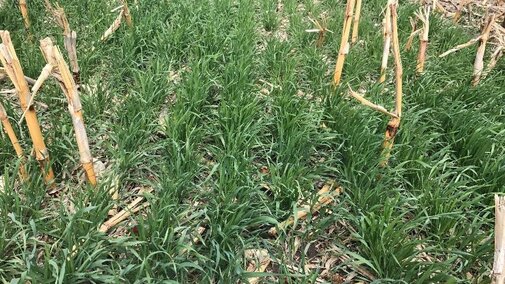Q: My cereal rye cover crop is only 3 to 5 inches tall going into planting season. Can I combine two field operations in one by applying glyphosate to terminate cereal rye and tank-mixing a residual herbicide for early season weed control?
A: Amit Jhala, Nebraska Extension Weed Management Specialist: Yes, a single tank-mix application could work well this year, given the short height of the cereal rye; however, planting of corn/soybean will need to follow within a few days of application to assure you don’t waste the 30-40 days of residual herbicide action depending on herbicide product. If you are NOT planning to plant corn/soybean in next few days after applying tank-mixture of glyphosate and a residual herbicide, better you wait to apply a residual product after planting corn/soybean. Common waterhemp Palmer amaranth and other troublesome weeds could quickly become established and be difficult to control.
If rye were at normal height, a single application of glyphosate plus a residual herbicide would not be recommended because the residual herbicide would contact the cereal rye, but amid heavy biomass, would likely not reach the soil (or only a part would) where it needs to do its work. In a more normal year, cover crop termination would be achieved by a burndown herbicide followed by planting corn/soybean and applying a pre-emergence, residual herbicide within one to four days of planting. (See Pre-emergence Residual Herbicides are the Foundation of Soybean Weed Control.) Recognize that herbicide activity, particularly glyphosate, will be slower in cooler temperatures. (See How Temperature and Rain Can Affect Burndown Herbicides.)
For more information see this CropWatch article Timing of Cover Crop Termination and Related Factors.
For more information on herbicides and their use in Nebraska, see the 2018 Guide for Weed, Disease, and Insect Management in Nebraska at https://marketplace.unl.edu/extension/ec130.html. (Available as a download or print copy, each $15.)

